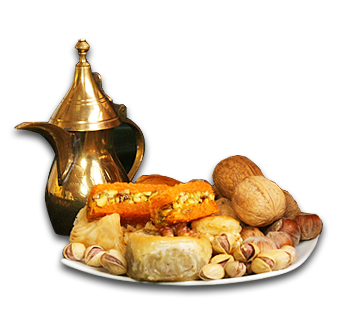 The coffee road The coffee road Cultivation of coffee Cultivation of coffee Arabica coffee Arabica coffee Robusta coffee Robusta coffee Coffee cultivation Coffee cultivation Roasting the coffee Roasting the coffee Tasting and analysis Tasting and analysis Coffee Tasters\' Terminology Coffee Tasters\' Terminology Big producers Big producers Coffee and ecosystem Coffee and ecosystem |
The countries which in the 17-18th centuries had colonies in Africa, South America and Asia, began producing coffee in the colonies. After independence, these former colonies continued to produce coffee and today export green coffee beans all over the world. Ethiopia – Abyssinia (Africa)Ethiopia, the birthplace of coffee is one of the world's most important producers in terms of both quality and quantity. Ethiopian coffee possesses both a wonderful aroma and low caffeine. Some of the regions that produce the highest quality coffee are "Sidamo", "Kaffa", "Harrar" and "Wellega." Ethiopian coffee is described as lemony, light, winey, floral, etc. Kenya (Africa)
Costa Rica (Central America)Costa Rica is one of the best places in the world to grow coffee thanks to its geography and climate. Wet-processed Arabica is cultivated in plantations in the countryside surrounding the capital, San Jose. The best known varieties are "Tres Rios", "Tarrazu", "Dota" and "San Marcos.". Costa Rica coffee is characterized by strong and lovely fragrance. Guatemala (Central America)Guatemala produces one of the best coffees in the world. The country's premium crop is named after Guatemala Antigua, an ancient city destroyed by earthquake in 1773 located near today's capital city, Guatemala. However, as coffee is cultivated over a wide-ranging area, there are regional variations in flavour. Its general taste profile can be described as mid to full bodied, floral, acidic, and a blend of smoky, spicy and chocolaty flavours that create a wonderful balance. Jamaica (Carribean)The "Blue Mountain" coffee is an important source of income for Jamaica and grows in a small region in the east of the island. Other countries may try to cultivate this famous and rare coffee and market it as "Blue Mountain", but the genuine article only grows in Jamaica. With its distinctive taste, "Blue Mountain" stands out from all the other coffees grown in the Caribbean. Thanks to its high quality, limited supply and rarity, "Blue Mountain" coffee is quite expensive. Unlike other varieties of coffee, real "Blue Mountain" coffee is stored and exported in barrels rather than sacks. Not overly acidic, it has a very light, nutty, semi sweet and smooth flavour, making it the world's most famous, most expensive, and most talked-about variety of coffee. Brazil (South America)Supplying one third of the world's coffee, Brazil's coffee huge plantations are comprised of millions of trees that cover the peaks of the country's central and southern regions. In addition to being an important player in the commercial coffee industry, Brazil is the largest consumer of coffee in the world, with an annual consumption of 720 million kg. Indeed, the Brazilians call breakfast "café da manhã", or morning coffee. Brazil mainly grows Arabica plus a small quantity of Robusta, and the crop is generally dry processed. Each of Brazil's states produces different varieties of coffee. However, the "Bourbon Santos" variety is the preferred favourite of coffee experts. Gourmets describe Brazilian coffee as easy to drink without too much acidity. Colombia (South America)Colombia produces 12% of the world's coffee. It owes its rich soil to its actively volcanic geography. Mountain ranges separate central Colombia into three regions (cordilleras) that run from north to south. The best coffee comes from the central and west cordilleras. The best coffee varieties grown in the central cordillera are "Medellin", "Armenia" and "Manizales". With its full body, rich flavour and refined, medium acidity, "Medellin" is the best-known variety. "Manizales" and "Armenia" generally have a lighter body and are less acidic. The eastern cordillera's best-known two coffees are "Bucaramanga" and "Bogota", which is grown in the area around the nation's capital. Bogota is considered one of Columbia's most refined coffees and is less acidic than the "Medellin" variety. "Bucaramanga" coffee has a lighter, mellow flavour; like "Sumatra" coffee, it is full bodied, low in acidity and has a rich flavour. Hawaii (South Pacific)Hawaii has been growing coffee since 1818. The only coffee grown in United States territory, Hawaiian coffee is known as "Kona" coffee. Expert opinion on "Kona" varies, but it is often compared to Jamaican Blue Mountain coffee. Both coffees are mildly acidic, of medium body, and with a pleasant, nutty aroma. Some coffee experts also characterise it as having a spicy flavour with a hint of cinnamon. As is it is only grown in a small region, Kona is also an expensive coffee. Sumatra – Indonesia (Southeast Asia)Coffee produced in Indonesia is grown on three islands: Sumatra, Java and Sulawesi. Sumatra supplies 68% of the country's total production. The island's Arabica varieties are marketed under the "Sumatran" and "Blue Sumatran" names. With its rich aroma and low acidity, "Mandheling" is known as "the world's heaviest coffee". "Gayo Mountain" is described as sweet, spicy, exotic and herbal, while some experts believe that "Ankola" is the world's best unwashed Arabica. Java – Indonesia (Southeast Asia)The island of Java accounts for 12% of Indonesia's coffee production. A plague of leaf rust (hemileia vastatrix) in the 19th century left only the Arabica stands at higher elevations unscathed. Known as "Old Java", this Arabica variety is described as smooth, rich, with an aromatic, smoky character. The coffee trees lost to the blight were replaced with "Estate Java", which is more acidic and lighter-bodied than the "Old Java". |



